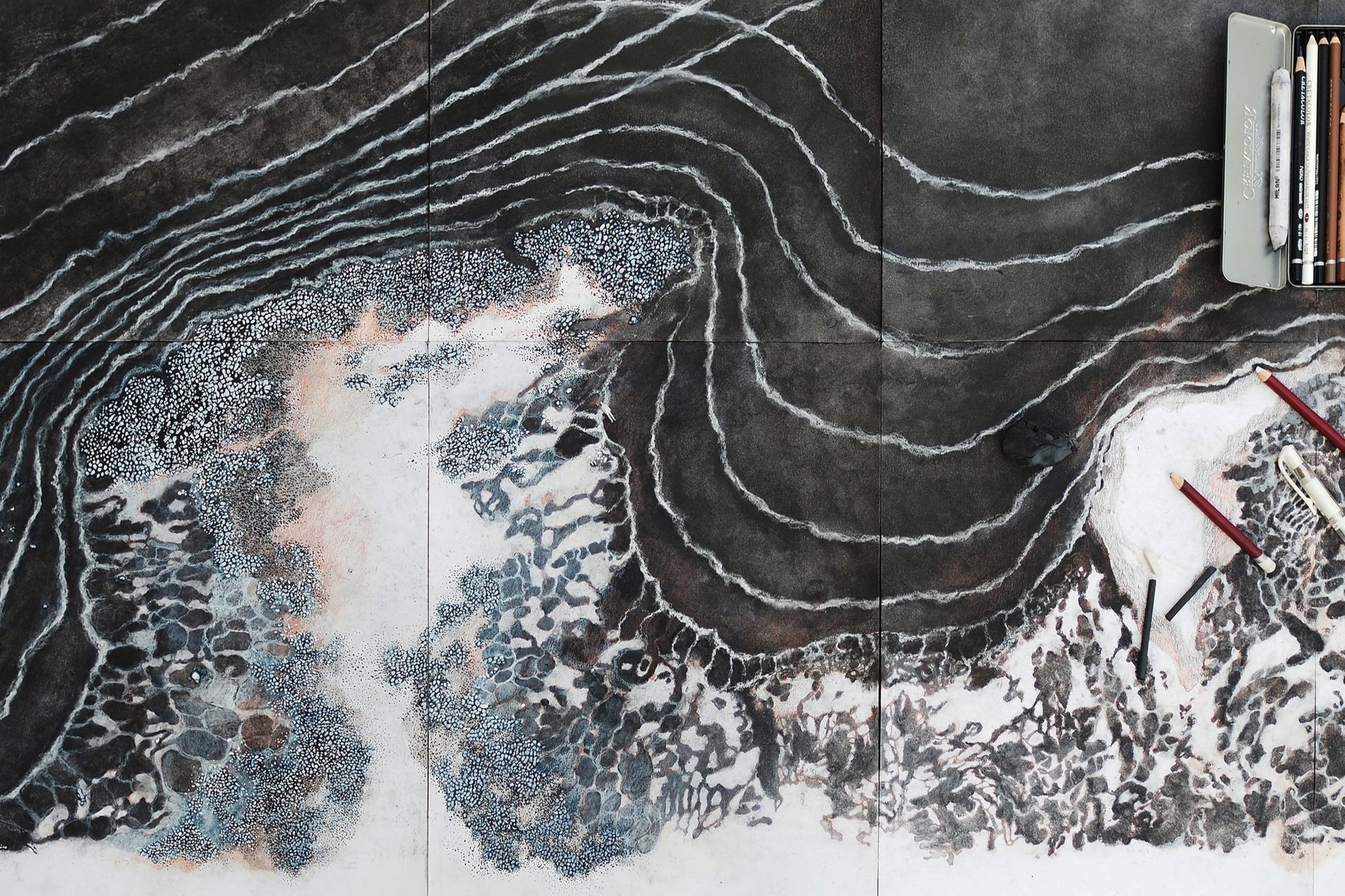
Reassembling the Intertidal
A design-led research (PhD) thesis, by Dr. Wong Zi Hao, 2019-2023
National University of Singapore,
College of Design and Engineering,
Department of Architecture
Thesis supervisor: Assoc. Prof. Dr. Lilian Chee
Thesis Committee: Dr. Constance Lau; Assoc. Prof. Dr. Erik G. L’Heureux;
Assoc. Prof. Dr. Lee Kah-Wee
Thesis Examiners: Dr. William Michael Davis; Assoc. Prof. Dr. Kamalini Ramdas
The thesis constructs an architectural practice of care for an ephemeral intertidal coastline—a neglected topography, premised on the rehabilitation of ways of representing and seeing the landscape through its fragile materialities. Care is explored as a material yet speculative assembling of neglected things, running akin to design processes where thinking goes alongside the making of representations of the landscape—a process that while emphasising the dominance of visuality to thinking, is instead revealed as embodied, material, and haptic. Utilising design as research method, an original architectural programme of repair, and practice of caring through hands-on making-and-thinking, is explored in the design of tactile modes of representation for the at-risk topography that is better felt/experienced than seen. The design process is recounted as topographical stories and a means to assemble tactile imaginations of these neglected margins: of ghost islands, sharp teeth, and living rocks, long demolished beneath Singapore’s infrastructural waters.
Located within Singapore’s historic Tanjong Rimau coast, the chosen site is a dwindling intertidal flatland with its reef grounds and is one of the island-city’s few remaining natural coasts. Two design explorations invested in materialising the ephemeral and fraying topographies of the intertidal landscape—through a constructed archive of tactile artefacts including drawings, physical models, and textual narratives—constitute this design-led practice of care for neglected topographies. The first explores how “rehabilitation” must entail new haptic modes of representing and “seeing” for the flatlands—submerged topographies that are treaded and sensed underfoot. Following on, the haptic treatment of drawing materials and ways of “seeing” reveal intimate textural readings of broken reef grounds that trace and re-story once denigrated reef/intertidal histories alongside Singapore’s visions of reef rehabilitation as eco-technologies of living seawalls, unravelling new ways of thinking about the island-nation’s mitigation efforts against sea level rise. Instead of arriving at built/buildable solutions, the tactile drawings open questions that dwell on the city’s tenuous relationship to its island fringes, seen at once as backwater and future oriented; neglected but also a context to speculate with care.
Concluding this experimental architectural practice of care, the design explorations and findings are recounted in “Stories for Neglected Topographies”, a manual of alternative repair for Singapore’s coasts, predicated on embodied meaning-making and ways of seeing/knowing for the landscape. The thesis puts forward as its original contribution to knowledge the recontextualisation of embodied drawing processes as architectural practices of care towards the environment; and a method for design premised on representing and “seeing” at-risk landscapes in multi-modal and haptic ways.




